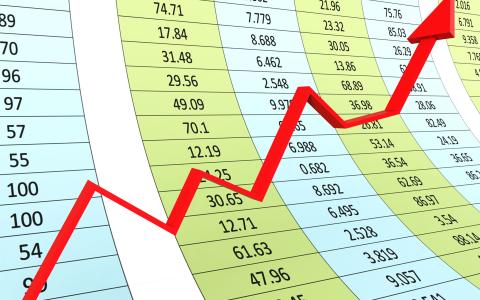
Margin trading in the U.S. has surged to unprecedented levels. As of January 2025, debit balances in investors' margin accounts reached a record $937 billion, marking a 33% increase from $701 billion in January 2024, according to the Financial Industry Regulatory Authority (FINRA).
During the same period, the S&P 500 experienced a 24.7% gain, reflecting robust equity market performance.
Margin trading allows investors to borrow funds from brokerage firms to purchase stocks, potentially amplifying returns. However, this strategy carries significant risk, as investors use their securities portfolios as collateral. Elevated levels of margin debt can serve as a cautionary indicator, yet they may not immediately signal alarm, according to Jennifer Hutchins, co-Chief Investment Officer at Avantax, a unit of wealth management firm Cetera.
"As wealth grows, it is normal that debit balances would grow, if nothing more than to maintain a fairly stable percentage of debt," Hutchins explains. "This margin balance growth is not surprising, seeing the tremendous growth we have in equities, namely the S&P 500 over the last several years. History has shown that margin balances tend to grow in tandem with the S&P 500."
FINRA's data indicates a consistent rise in investors' use of margin throughout the previous year, with debit balances increasing from $701 billion in January 2024 to $809 billion by May 2024. Balances remained steady during the summer months before spiking as the U.S. presidential election approached. The markets experienced a notable uptick late last year, often referred to as the "Trump bump," as investors acquired shares of companies and assets anticipated to benefit from policy changes under the second Trump administration.
Hutchins also references Federal Reserve data from December 2024, which shows that household wealth has increased by $49.4 trillion since 2020. "While lower-income families may be facing some challenges, the top 20% of earners drive the majority of consumer spending," she notes. Given this context, along with low unemployment rates, U.S. consumers appear well-positioned to sustain spending, suggesting that current margin debt levels may not be as concerning as they initially appear.
Nonetheless, monitoring margin debt remains prudent. José Torres, senior economist at Interactive Brokers, observes that a reduction in investors' use of leverage could signal an impending market downturn. This pattern has precedent; in November and December 2021, investors began decreasing margin balances, and at the onset of 2022, the S&P 500 and other indices experienced significant declines.
Recently, markets have faced challenges as investors express concerns over high stock valuations, potential tariff impacts, and the possibility of resurgent inflation. A January survey by Charles Schwab of active traders revealed that a slim majority (51%) were bullish, with investors under age 40 being the most optimistic. However, two-thirds of respondents believed the market was overvalued. In February, consumer sentiment declined, with the University of Michigan's survey reaching its lowest reading since July 2024, and one-year inflation expectations rising to 4.3% from 3.3% in January.
"There are a lot of risks and uncertainties out there, and uncertainty is not good for animal spirits," Torres comments. "There are worries about earnings being able to grow double digits. So there could be some volatility this year and maybe next."
Certain risk assets have experienced sell-offs this year. Cryptocurrency prices have been declining in recent weeks after reaching record highs late last year. Bitcoin, for instance, has fallen more than 20% from an all-time high of nearly $110,000 to approximately $87,000. The S&P 500 has seen a modest increase of 1.5% this year, while the Nasdaq Composite has decreased by 1%. The forthcoming release of FINRA's next set of margin data in March may reveal whether investors are scaling back their use of margin trading.
As wealth advisors and Registered Investment Advisors (RIAs), it is essential to remain vigilant regarding clients' use of margin and the broader implications of increased leverage in the market. While current data suggests that rising margin debt corresponds with market growth, the potential for increased volatility underscores the importance of prudent risk management and client education on the inherent risks associated with margin trading.



